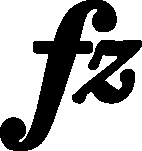



FE1 - First French edition
| Publisher: | Maurice Schlesinger |
| Date: | VI 1833 |
| Title: | Etudes || No. 11 |
| Dedication: | son ami J. Liszt |
First French edition, based on A. The comparison with the autograph, as well as visible traces of corrections, reveal a number of more or less probable changes performed in print. Some of them were included in GE, some not, which indicates the existence of at least two stages of proofreading of FE1 (probably even three – see the Etude in C major, No. 1). Chopin's participation in all stages of proofreading and their broad range is revealed by the preserved correspondence between Schlesinger and Kistner, and their palpable proof is constituted by FEcor (in the Etude in A minor, No. 2). Examples of changes performed at particular stages of proofreading:
-
1. Changes included in GE1 – all corrections of the original versions mentioned in the characteristics of A, in addition, change of
 to
to  in bar 21, adding arpeggios in bars 36-43. In this phase of proofreading, a significant part of necessary accidentals, including cautionary, was introduced, as, e.g., in bars 48-49;
in bar 21, adding arpeggios in bars 36-43. In this phase of proofreading, a significant part of necessary accidentals, including cautionary, was introduced, as, e.g., in bars 48-49; -
2. Changes not included in GE1 – e.g., change of the flat in bar 18 to a natural (perhaps) before c1, adding naturals returning c2-c3 in bar 40, a cautionary
 before g in bar 41, change of b
before g in bar 41, change of b 1 to g1 at the beginning of bar 50.
1 to g1 at the beginning of bar 50.
Apart from the above illustrated changes and additions, being undoubtedly a result of Chopin's intervention, in FE1 a number of differences with regard to A appears, whose qualification as authentic corrections is unclear or even dubious. Above all, it concerns the overlooked performance indications, e.g.:
-
dynamic indications as

 marks in bars 1-2 (cresc. in bar 3 is actually also placed differently than in A), 6-8, 28,
marks in bars 1-2 (cresc. in bar 3 is actually also placed differently than in A), 6-8, 28, 
 in bars 17, 19, 23, 25,
in bars 17, 19, 23, 25, 

 in bars 43-44,
in bars 43-44,  in bars 50-51,
in bars 50-51,  in bar 54;
in bar 54; - other indications, as pedal marks in bars 53 and 54.
According to us, a vast majority of these situations is a result of the engraver's haste. It may be even assumed that it was a more or less conscious strategy, as omitting a sign did not increase the workload (even if Chopin wrote a sign during a proofreading, adding it was not related to any additional effort), while engraving an erroneous sign required its burdensome deletion. However, in certain fragments in which, next to the aforementioned deficiencies, other signs or changes introduced in a proofreading of FE appear, one can assume the entire text to be proofread and accepted by Chopin. Therefore, we analyse each of these types of places individually in order to, on the one hand, respect the possible latest intention of Chopin and, on the other hand, not to deny the performer valuable authentic indications, which could have been omitted by accident.
In spite of a multi-level proofreading, FE1 is not free from evident mistakes, e.g., a  before the lower note of the 5th chord in bar 31, lack of flats lowering d2 to d
before the lower note of the 5th chord in bar 31, lack of flats lowering d2 to d 2 in bars 37-38, g instead of f
2 in bars 37-38, g instead of f in bar 42, g instead of e
in bar 42, g instead of e in bar 44, a2 instead of b
in bar 44, a2 instead of b 2 in bar 44.
2 in bar 44.
Despite the fact that it was A that was base text for FE1, in the edition there are visible traces of proofreading of the versions which are not present in this autograph, e.g., extension of the slur in bar 5, corrections of accidentals in bars 17-18. It is hard to assume how it occurred, yet the corrected signs may always be considered as accidental errors.
| Original in: | Bibliothèque Nationale de France, Paris |
| Shelf-mark: | Ac.p. 2725 |
